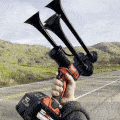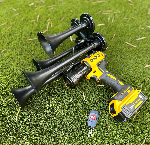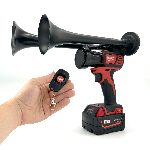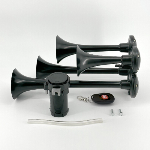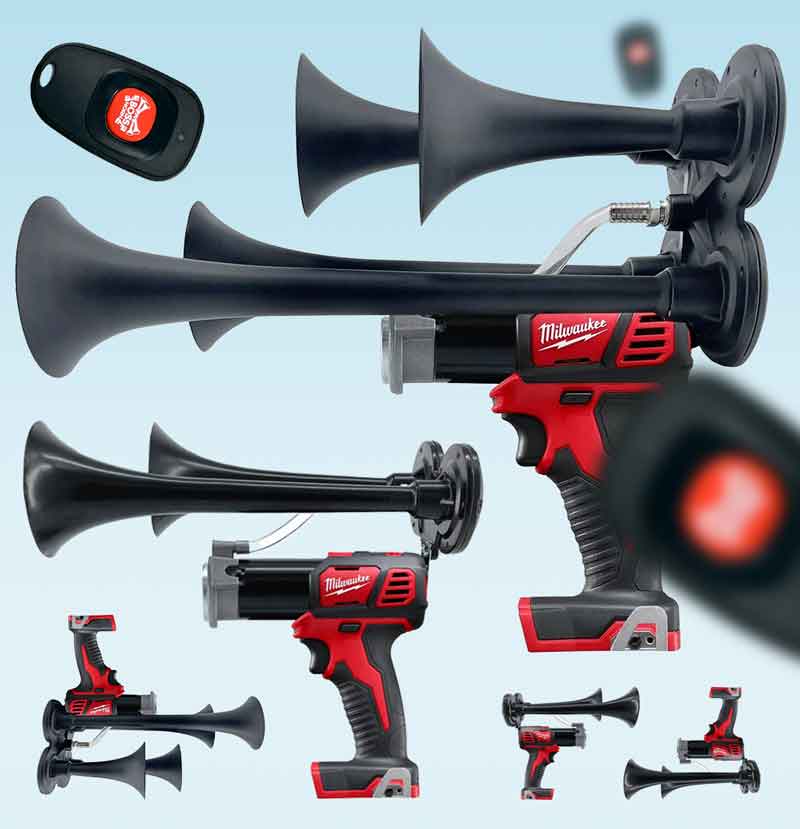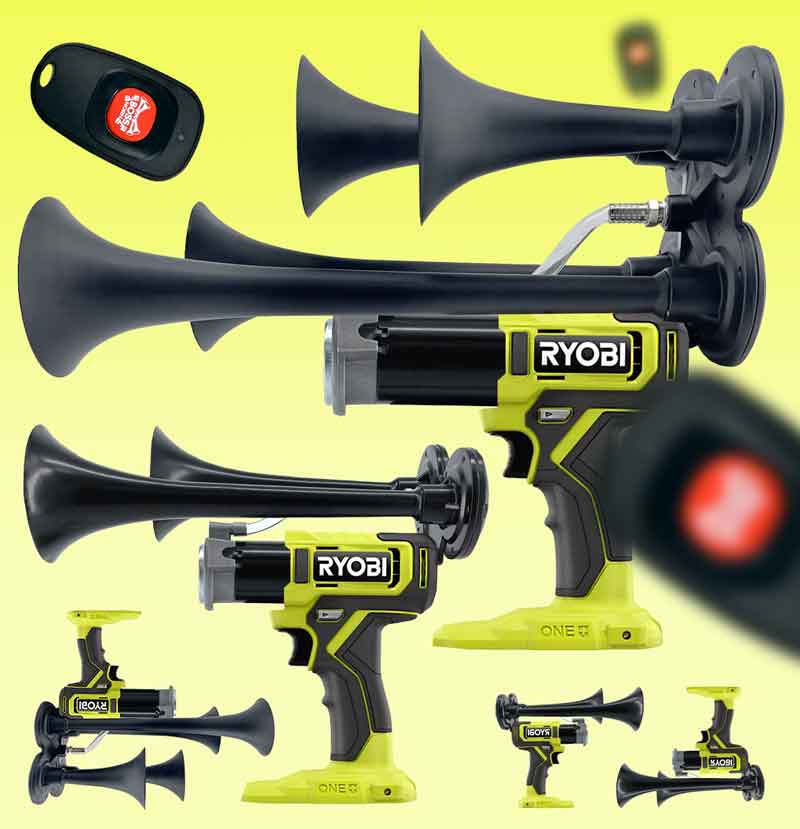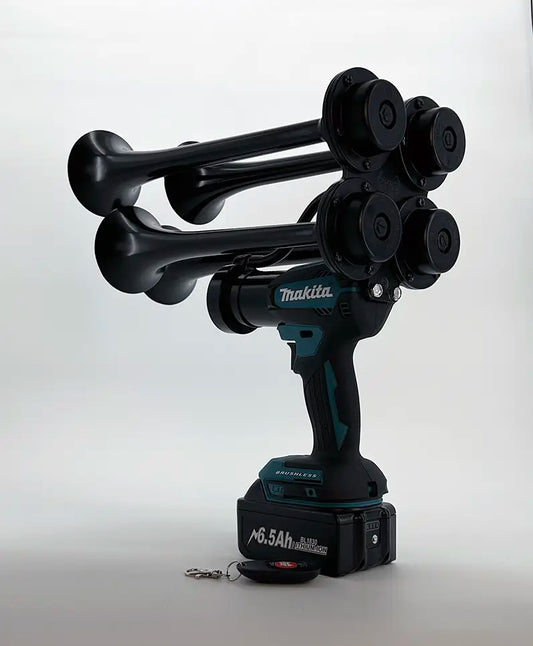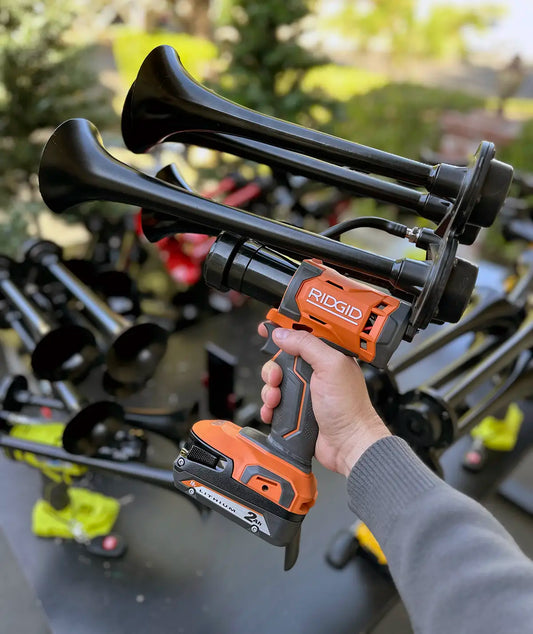Studies have shown that noise pollution is a significant environmental concern in urban areas. Excessive noise can have detrimental effects on human health and overall well-being. In bustling cities, one common source of noise that often contributes to this issue is the unmistakable sound produced by vehicles to signal a warning or attract attention.
Dating back to the early days of automobile manufacturing, the means of alerting other road users to potential dangers have evolved considerably over time. The first car horns, or warning signals, were rudimentary devices that operated manually through the use of a hand-squeezed bulb. As technology progressed, electric car horns emerged, providing a more consistent and louder sound. In modern times, these horn systems are now incorporated into the overall electrical system of the vehicle, and their sound can vary in intensity and pitch.
Today, car horns play a crucial role in ensuring road safety. They are primarily used as auditory alerts to notify nearby drivers or pedestrians in situations where visual cues may not be sufficient or practical. The sharp sound of a car horn can warn of an impending collision or signal the need for caution. It serves as a universal language that has been standardized for communication on the roads, ultimately helping to avoid accidents and save lives.
However, with the growing concerns surrounding noise pollution, there is an increasing need for alternative solutions that balance safety and serenity. Innovations have been made to develop sound systems that emit less jarring and intrusive noises while still effectively conveying the necessary alerts. Some car manufacturers have even started implementing external speakers that reproduce natural sounds, such as bird chirps or gentle chimes.
While these advancements show promise in mitigating noise pollution associated with car horns, effective education and awareness campaigns are equally vital. Educating drivers on the appropriate use of car horns, promoting patience and understanding on the road, and encouraging alternative means of communication, such as hand signals or flashing lights, can all contribute to a more harmonious and safer road environment.
As cities continue to expand, the need to address noise pollution becomes increasingly urgent. Reducing the prominence of car horns and finding innovative solutions that strike a balance between safety and tranquility will contribute to creating more livable and sustainable urban environments. Ultimately, fostering a more considerate and mindful approach to the use of auditory alerts is essential for the well-being and quality of life of all city dwellers.
Are car horns essential for road safety? The purpose and importance of honking in traffic situations and beyond.
Car horns, also known as honks, serve as an audible warning device in vehicles. They emit a loud sound to alert other road users or pedestrians about the presence of a vehicle, potential danger, or to communicate various messages. The distinct sound of a car horn can be heard from a considerable distance, cutting through the hustle and bustle of traffic noise. Honking helps to grab attention, prevent accidents, and maintain order on the roads.
In this article, we will explore the multifaceted role of car horns in ensuring road safety, examining their functional aspects and the significance of responsible honking. From its inception as a safety feature to its current utility in various traffic scenarios, we will delve into the evolution and regulations surrounding car horns. Let's dive deeper into this ubiquitous and sometimes controversial tool that has become an integral part of the driving experience.
History of the Car Horn
Since the advent of automobiles, the need for an auditory warning system quickly became apparent. The car horn, also known as the honk, has been a staple feature of vehicles for many decades. Its purpose is to alert other drivers and pedestrians of the presence of a vehicle and to communicate various messages in different situations.
The development of car horns dates back to the early 1900s when Klaxon, a brand popular at the time, introduced the first electric horn. This innovation replaced the antiquated bulb horns and became a standard feature in automobiles. The electric horn utilized an electromagnet and a diaphragm to produce a loud sound when activated.
Over the years, car horns have evolved to incorporate different types and designs. Modern vehicles often have dual-tone horns that produce a more distinctive and attention-grabbing sound. These horns are typically powered by the vehicle's electrical system and can emit sounds of varying frequencies and intensities.
Function and Importance of Car Horns
Car horns serve as a crucial safety feature on the roads, enabling drivers to alert others of potentially hazardous situations. They are used to communicate several messages and warnings, including:
- Signaling danger: A quick and loud honk can be used to warn pedestrians or other vehicles of an imminent danger, such as a collision or erratic behavior on the road.
- Passing signals: When overtaking another vehicle, a short honk can be used to indicate the intention to pass and alert the driver ahead.
- Warning signals: In heavy traffic or congested areas, a light tap on the horn can be used to draw attention and alert other drivers of a starting or stopping vehicle.
- Communication: Car horns can also be used as a means of communication between drivers, expressing frustration, appreciation, or acknowledging another driver's courtesy on the road.
Overall, car horns play an integral role in maintaining road safety, preventing accidents, and promoting efficient communication between drivers.
Regulations and Etiquette
The use of car horns is regulated in many countries to ensure proper and considerate usage. Drivers are typically advised to follow these guidelines:
- Use the horn when necessary: Car horns should only be used when there is a genuine need to alert others or communicate an important message. Unnecessary and prolonged honking can be both annoying and disruptive.
- Avoid aggressive honking: Honking out of frustration or anger is generally discouraged as it contributes to a hostile driving environment and can escalate tensions on the road.
- Respect noise regulations: Many countries have specific laws regarding the permissible noise levels produced by car horns. Drivers should adhere to these regulations to maintain a peaceful and less noisy environment.
By following these regulations and practicing courteous honking, drivers can contribute to a safer and more harmonious driving experience for everyone.
Statistics
According to a recent survey conducted in major cities:
- 70% of drivers believe that car horns are essential for road safety.
- Only 35% of drivers feel that car horns are used appropriately by others.
- Approximately 40% of drivers have witnessed confrontations or aggressive behavior triggered by the misuse of car horns.
- On average, drivers honk their horns 2-5 times per week.
https://youtube.com/watch?v=P4gwv8XzBq0
1. What is the purpose of the loud noise made by vehicles?
The loud noise made by vehicles serves as a crucial means of communication on the road, enabling drivers to relay important messages to other motorists or pedestrians. It is a safety feature designed to alert others to potential hazards or indicate intentions. By emitting a sound, drivers can effectively convey warnings, express frustration, or seek attention when necessary.
Key pieces of information:
1. The loud noise made by vehicles serves as a form of communication.
2. It is a safety feature that alerts others to hazards or intentions.
3. Drivers use it to convey warnings or seek attention.
2. How does the noise produced by vehicles impact road safety?
The noise produced by vehicles plays a significant role in ensuring road safety. It serves as a vital warning signal, alerting pedestrians and other motorists to the presence of a moving vehicle. This auditory feedback is particularly important for visually impaired individuals who heavily rely on sound cues while navigating their environment. Moreover, the sound of vehicles can help prevent accidents by drawing attention to potential dangers, promoting a safer driving experience for all road users.
Key pieces of information:
1. The noise produced by vehicles is a crucial warning signal.
2. It helps visually impaired individuals navigate their surroundings safely.
3. The sound of vehicles can prevent accidents by highlighting potential dangers.
3. Can vehicle sounds influence driver behavior?
Vehicle sounds can indeed influence driver behavior in various ways. The auditory feedback provided by vehicle noises helps drivers stay alert and attentive while on the road. For example, hearing the sound of an emergency siren prompts drivers to yield and clear the way for emergency vehicles. Furthermore, certain sounds, such as car alarms, serve as deterrents for potential thieves, discouraging them from attempting to break into a vehicle.
Key pieces of information:
1. Vehicle sounds help drivers remain attentive and alert.
2. Emergency sirens prompt drivers to give way to emergency vehicles.
3. Car alarms act as deterrents against car theft.
4. How can noise pollution from vehicles be minimized?
To minimize noise pollution from vehicles, several measures can be implemented. Firstly, regular maintenance of vehicles, including muffler checks and repairs, can significantly reduce noise emissions. Secondly, stricter regulations on vehicle noise levels can be enforced, ensuring that newly manufactured vehicles meet noise standards. Finally, encouraging the use of electric or hybrid vehicles, which operate more quietly than traditional gasoline-powered cars, can contribute to the reduction of overall noise pollution on the roads.
Key pieces of information:
1. Regular maintenance of vehicles reduces noise emissions.
2. Stricter noise level regulations can be enforced on vehicles.
3. Promoting the use of electric or hybrid vehicles can help decrease noise pollution.
5. How do cultural norms and legal requirements influence the use of vehicle sounds?
Cultural norms and legal requirements have a significant influence on the use of vehicle sounds. In some countries, honking excessively or using the vehicle horn for non-emergency situations is considered rude or impolite. Conversely, in crowded cities or traffic-prone areas, honking may be more prevalent as a means of communicating frustration or asserting one's presence on the road. Legal requirements also dictate when and how the vehicle horn should be used, specifying situations where it is allowed or prohibited to ensure safer road conditions.
Key pieces of information:
1. Cultural norms vary regarding the use of vehicle sounds.
2. Legal requirements dictate the appropriate use of vehicle horns.
3. Excessive honking can be considered impolite in certain cultures.
Conclusion
In conclusion, the car horn or honk is a crucial component of road safety and communication. It serves as an effective warning system to alert other drivers, pedestrians, and cyclists about potential hazards or impending danger. The main purpose of the car horn is to quickly grab attention and communicate important messages on the road.
Key Points:
- The car horn is an auditory signal that is used by drivers to communicate with others on the road.
- Honking can serve as a warning to alert pedestrians or cyclists of an approaching vehicle and prevent accidents.
- Car horns are used to signal potential dangers, such as an oncoming car in blind spots or to indicate intentions like changing lanes or overtaking.
- Emergency situations require the use of the car horn to quickly grab attention and inform others of urgent circumstances.
- It is essential to use the car horn responsibly and judiciously, avoiding unnecessary honking that can lead to noise pollution and annoyance.
- Different countries and regions have varying regulations concerning the use of car horns, and drivers should adhere to these guidelines.
Insights:
- The car horn has become an integral part of driving culture, serving as a vital tool for communication and safety.
- Responsible usage of the car horn can contribute to a safer road environment and prevent accidents.
- Drivers should be aware of the proper situations in which to use the car horn and avoid excessive honking that can disrupt tranquility.
- Technological advancements have led to the development of car horns with adjustable sound levels or alternative warning signals for pedestrians, enhancing safety on the road.
- Education and awareness campaigns can help promote understanding and respectful usage of car horns, fostering a harmonious driving experience for everyone.
Overall, the car horn remains an essential feature of vehicles, enabling drivers to effectively communicate with others, prevent accidents, and create a safer road environment. It is crucial to understand its purpose, regulations, and best practices to ensure responsible usage and a respectful driving experience.

